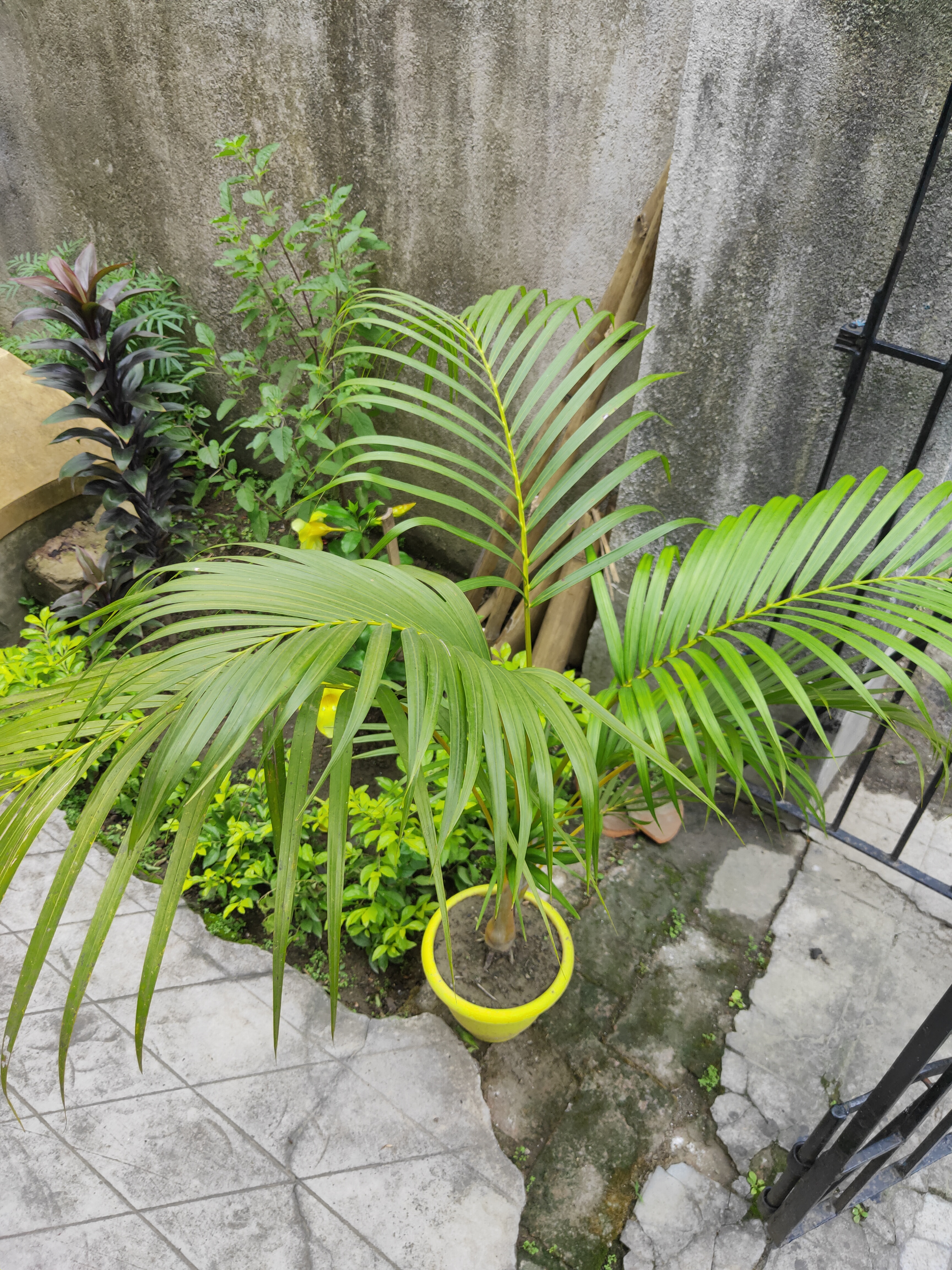What is the Golden Cane Palm?
The Golden Cane Palm, or Dypsis lutescens, is a tropical palm that grows in Madagascar, as well as other parts of Southeast Asia. It is often cultivated as a houseplant and is prized for its graceful, arching fronds that can reach up to 8 feet in length. The plant gets its name from the golden-yellow coloration that develops on its leaves when exposed to bright sunlight.
The Golden Cane Palm is an excellent air purifier and can remove harmful toxins such as benzene and formaldehyde from indoor spaces. Additionally, it is a low-maintenance plant that thrives in bright, indirect light and moderate to high humidity.
How to Care for Golden Cane Palms
To keep your Golden Cane Palm looking its best, it is essential to provide it with the right care and environment. Here are some tips to help you care for your plant:
- Light: The Golden Cane Palm thrives in bright, indirect light. Place it near a window that gets filtered sunlight or in a well-lit room with plenty of natural light.
- Soil: Use a well-draining soil mix that contains peat moss or perlite to help keep the soil moist but not waterlogged.
- Water: Water your plant when the top inch of soil feels dry to the touch. Avoid overwatering, as this can lead to root rot and other problems.
- Humidity: The Golden Cane Palm prefers moderate to high humidity levels. You can increase humidity by placing a humidifier nearby, or by misting the leaves with water.
- Temperature: This plant prefers temperatures between 60°F to 80°F. Avoid placing it near drafty windows or doors, or in areas with extreme temperature fluctuations.
Watering and Fertilizing Golden Cane Palms
Proper watering and fertilizing are crucial to the health and growth of your Golden Cane Palm. Here are some guidelines to follow:
- Watering: As mentioned earlier, water your plant when the top inch of soil feels dry. Avoid overwatering, as this can lead to root rot. Allow the soil to drain completely before replacing the plant in its saucer.
- Fertilizing: Use a balanced, water-soluble fertilizer every 2-4 weeks during the growing season (spring and summer). Follow the package instructions for dosage and application.
- Re-potting: Repot your Golden Cane Palm every 2-3 years to provide fresh soil and a larger container for growth.
Pruning and Propagating Golden Cane Palms
Pruning involves removing dead or yellowing fronds from the Golden Cane Palm to promote new growth and keep the plant looking neat and tidy. Use sharp, clean shears to make a clean cut at the base of the frond, being careful not to damage the trunk or other healthy fronds.
Propagation involves growing new Golden Cane Palms from existing plants. This can be done through division or by collecting and planting seeds. To propagate through division, carefully remove the plant from its pot and separate the root ball into two or more sections. Replant each section in a separate pot with fresh soil and water thoroughly. To propagate by seed, collect fresh seeds from a mature plant and plant them in a well-draining soil mix. Keep the soil moist and warm, and the seeds should germinate within a few weeks.
Common Pests and Diseases of Golden Cane Palms
Like any plant, the Golden Cane Palm is susceptible to a few pests and diseases. Here are some common issues to watch out for:
- Spider Mites: These tiny insects can cause yellowing and brown spots on the leaves. Treat infestations with insecticidal soap or neem oil.
- Mealybugs: These insects leave a cottony, white residue on the leaves and stems. Remove them manually with a cotton swab dipped in rubbing alcohol, or treat them with insecticidal soap.
- Leaf Spot: This fungal disease causes brown spots on the leaves. Remove infected leaves and improve air circulation to prevent further spread.
- Root Rot: Overwatering can lead to root rot, which can cause the plant to wilt and eventually die. Ensure the soil has proper drainage, and avoid overwatering.
Benefits of Golden Cane Palms
In addition to its aesthetic appeal, the Golden Cane Palm offers a range of benefits for indoor spaces. As mentioned earlier, it is an excellent air purifier that can remove harmful toxins from the air. Additionally, it can help regulate humidity levels, making it a great addition to dry indoor environments. Its lush foliage can also help create a calming, natural ambiance in any space.
FAQs
1). How often should I water my Golden Cane Palm?
A: Water your Golden Cane Palm when the top inch of soil feels dry to the touch.
2). Can I grow a Golden Cane Palm from seed?
A: Yes, you can grow a Golden Cane Palm from seed. Collect fresh seeds from a mature plant and plant them in a well-draining soil mix.
3). What should I do if my Golden Cane Palm is infested with spider mites?
A: Treat spider mite infestations with insecticidal soap or neem oil.
4). Often should I fertilize my Golden Cane Palm?
A: Use a balanced, water-soluble fertilizer every 2-4 weeks during the growing season (spring and summer).
5). Can I propagate my Golden Cane Palm by division?
A: Yes, you can propagate your Golden Cane Palm by dividing the root ball into two or more sections.
Conclusion
We hope this guide has provided you with all the information you need to care for and appreciate your Golden Cane Palm. With the right care and environment, this elegant and low-maintenance plant can thrive in any indoor space. Remember to provide it with bright, indirect light, well-draining soil, and proper watering and fertilizing. With a little love and attention, your Golden Cane Palm can become a beautiful and calming addition to your home or office.





.jpeg)
.jpeg)


0 Comments